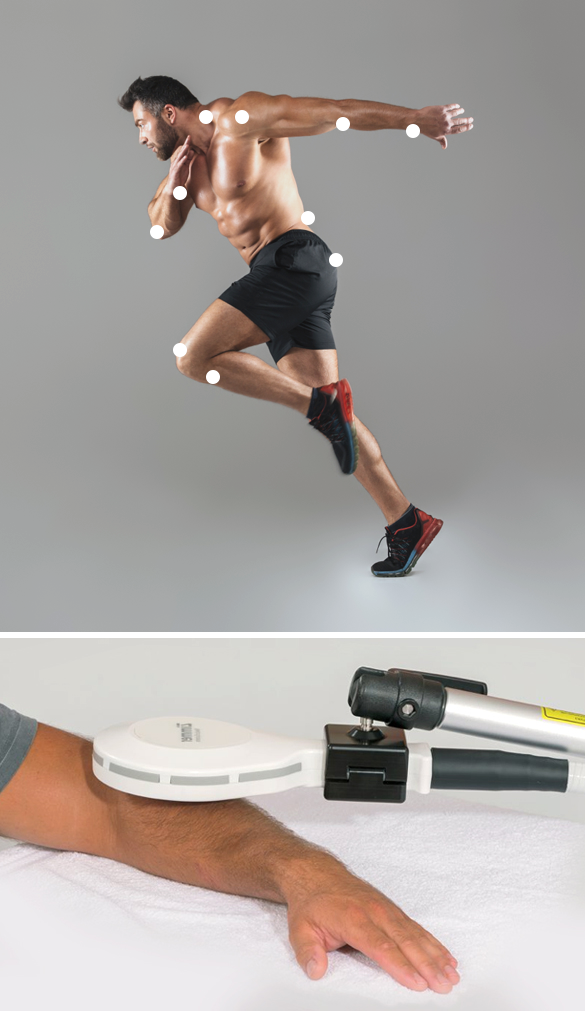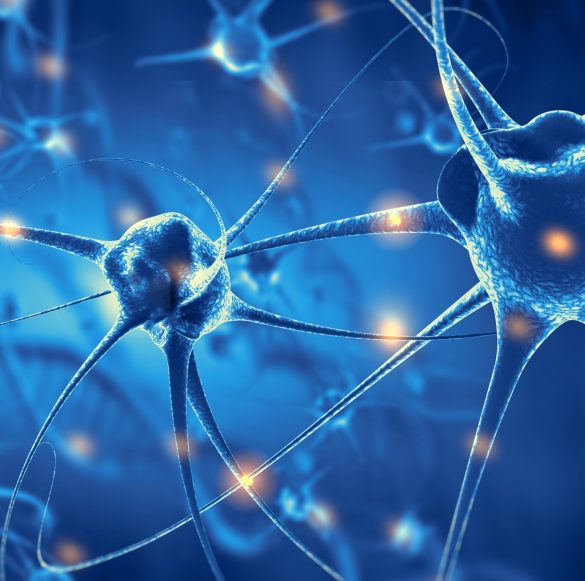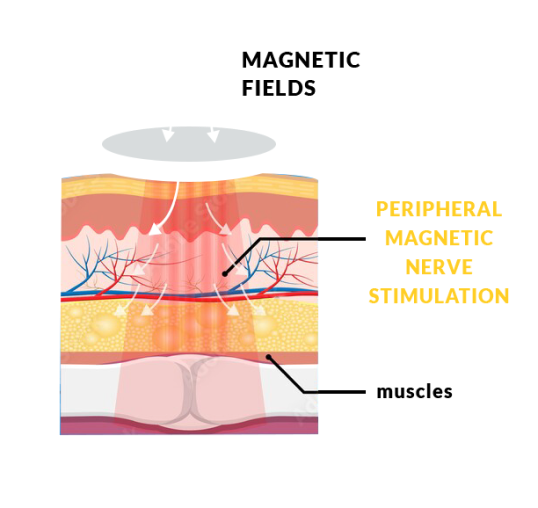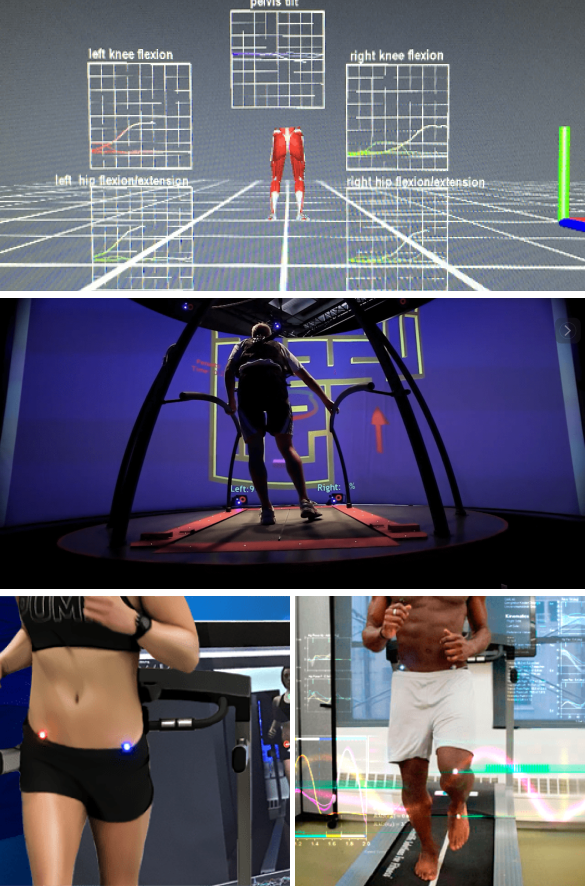Healthy human cells provide a highly efficient medium for conducting electromagnetic energy. Every cell and its membrane has an electrical charge, but when cells are damaged or become unhealthy, they lose much of their conductivity and their capacity for optimal function. Electromagnetic fields (EMFs) are known to increase cellular energy and optimize cellular function. High energy inductive therapy (HEIT) uses EMFs to activate the electrical chemistry of cells, to improve the function of damaged cells and their membranes.
or
Dr. Lev Kalika, clinical director of NYDNRehab, has set out to revolutionize the way musculoskeletal conditions and pain syndromes are diagnosed and treated. In the 15-plus years since the clinic’s inception, multiple new regenerative technologies have emerged that stimulate and accelerate healing at the cellular level.
Dr. Kalika has made it his personal mission to become proficient in rehabilitative technologies that help patients to quickly resolve pain, dysfunction and injuries. HEIT is the latest tool to be added to NYDNRehab’s high-tech regenerative toolbox.
High energy inductive therapy uses electromagnetic fields to penetrate cells, tissues, organs and bones, to reactivate the electrochemical function of cells and cell membranes. HEIT generates a magnetic field of up to 3 Tesla, about 600 times stronger than the field of a normal magnet, to stimulate healing of nerves, muscles and blood vessels.
During HEIT therapy, the clinician uses a non-invasive handheld device to deliver EMFs to the site of pain or dysfunction. The patient remains completely clothed, with no skin contact, and the procedure is completely pain-free. Depending on the patient’s condition, the clinician can opt for static or dynamic treatment.
Static treatment entails the use of a large applicator mounted on an applicator arm and directed at pain points or trigger points that have previously been palpated by the clinician. The clinician then selects the appropriate power output level to target the affected area. Static treatment is typically used to treat trigger points or pain points.
Dynamic treatment is administered by the clinician using a hand-held medium-sized applicator. After initially palpating the treatment zone, the clinician selects the appropriate power output level and administers HEIT by hand. Dynamic treatment is typically used to treat more generalized areas of pain.
Static and dynamic HEIT treatments may be combined, but static therapy for trigger points should precede dynamic therapy.


Percutaneous functional neuromodulation (PFN), also called peripheral neuro stimulation (PNS), is a new methodology for pain management and muscle recruitment training.
After an injury, the brain creates suboptimal compensation patterns in muscles, in order to unload the damaged tissues. Once tissues are fully healed, efficient muscle activation patterns need to be retrained to restore optimal movement, which is one of the most challenging aspects of physical therapy.
PFN works by magnetically activating nerves to generate a biochemical reaction at the neuromuscular junction. This essentially rewires the nerve-muscle connection. PFN provides the best technology for retraining muscle activation patterns.
Pain poses a major obstacle to effective physical therapy, inhibiting the patient’s progress. Peripheral magnetic nerve stimulation is a neuromodulation technique where magnetic fields are arranged along the pathway of peripheral nerves through the skin. The magnetic fields are able to upregulate or downregulate pain circuits, to eliminate chronic pain.
While the exact mechanisms of peripheral magnetic nerve stimulation are unclear, it is thought that the magnetic fields evoke a neurochemical response that influences the concentration of neurotransmitters, neuromodulators, and inflammatory molecules that mediate the pain response.


The specialists at NYDNRehab understand that physical rehabilitation takes time, and we believe that time should not be wasted on misdiagnosis or ineffective treatment approaches. For this reason, we use the latest technologies to accurately diagnose and quantify each patient’s condition.
Our diagnostic tools include:
Highest resolution diagnostic ultrasonography, with capabilities for sonoelastography and microvascular imaging
3D gait analysis technologies
AI-enabled testing for muscle strength and performance
Computer assisted rehabilitation environment (C.A.R.E.N)
The latest evidence-based assessment protocols
The information and data collected during the diagnostic process enables us to create a comprehensive baseline to measure the patient’s progress. We never take a one-size-fits-all approach to patient diagnosis and treatment. Our one-on-one personalized treatment protocols ensure that each patient gets the exact care they need, for the fastest possible return to healthy pain-free function.
Relaxing muscle spasms
Preventing muscle and bone atrophy from disuse
Increasing blood circulation to an injured area
Retraining of muscle firing patterns
Release and rejuvenation of the fascia
Release of deep and large muscles that cannot be accessed by hand
Neuromodulation for peripheral desensitization
Improving and maintaining joint range of motion
Post-surgical stimulation to prevent venous thrombosis in the calves and legs
If you suffer from chronic pain and want fast and effective results, you need a clinic that leverages the latest technologies and therapies that really work. Run-of-the-mill physical therapy clinics often use a cookie-cutter approach to patient care that gets mediocre results.
The personalized one-on-one approach at NYDNRehab ensures that every patient is accurately diagnosed and appropriately treated. Our goal is to restore pain-free function in the least time possible, so you can get back to doing the things you love. Contact NYDNRehab today, and see what a difference technology can make in cutting-edge results-oriented physical therapy.
Kalika, L., and R. V. Bubnov. “Ultrasound-controlled percutaneous neuromodulation alleviates muscle activation in physiotherapy practice.” Movement Disorders. Vol. 36. 111 River St., Hoboken 07030-5774, NJ USA: Wiley, 2021.
https://www.researchgate.net/publication/354574062_Ultrasound-controlled_percutaneous_neuromodulation_alleviates_muscle_activation_in_physiotherapy_practice
Kalika, L., and R. V. Bubnov. “Using Ultrasound for Assistance Percutaneous Neuromodulation in Physiotherapy Practice”. May 2021. Conference: The 52nd Annual Congress of Korean Society of Ultrasound in MedicineAt: Coex, Seoul, Korea
https://www.researchgate.net/publication/351492043_Using_Ultrasound_for_Assistance_Percutaneous_Neuromodulation_in_Physiotherapy_Practice
Paolucci, Teresa, et al. “Electromagnetic Field Therapy: A Rehabilitative Perspective in the Management of Musculoskeletal Pain–A Systematic Review.” Journal of Pain Research 13 (2020): 1385.
https://www.ncbi.nlm.nih.gov/pmc/articles/PMC7297361/
Dr. Lev Kalika is a world-recognized expert in musculoskeletal medicine. with 20+ years of clinical experience in diagnostic musculoskeletal ultrasonography, rehabilitative sports medicine and conservative orthopedics. In addition to operating his clinical practice in Manhattan, he regularly publishes peer-reviewed research on ultrasound-guided therapies and procedures. He serves as a peer reviewer for Springer Nature.
Dr. Kalika is an esteemed member of multiple professional organizations, including: